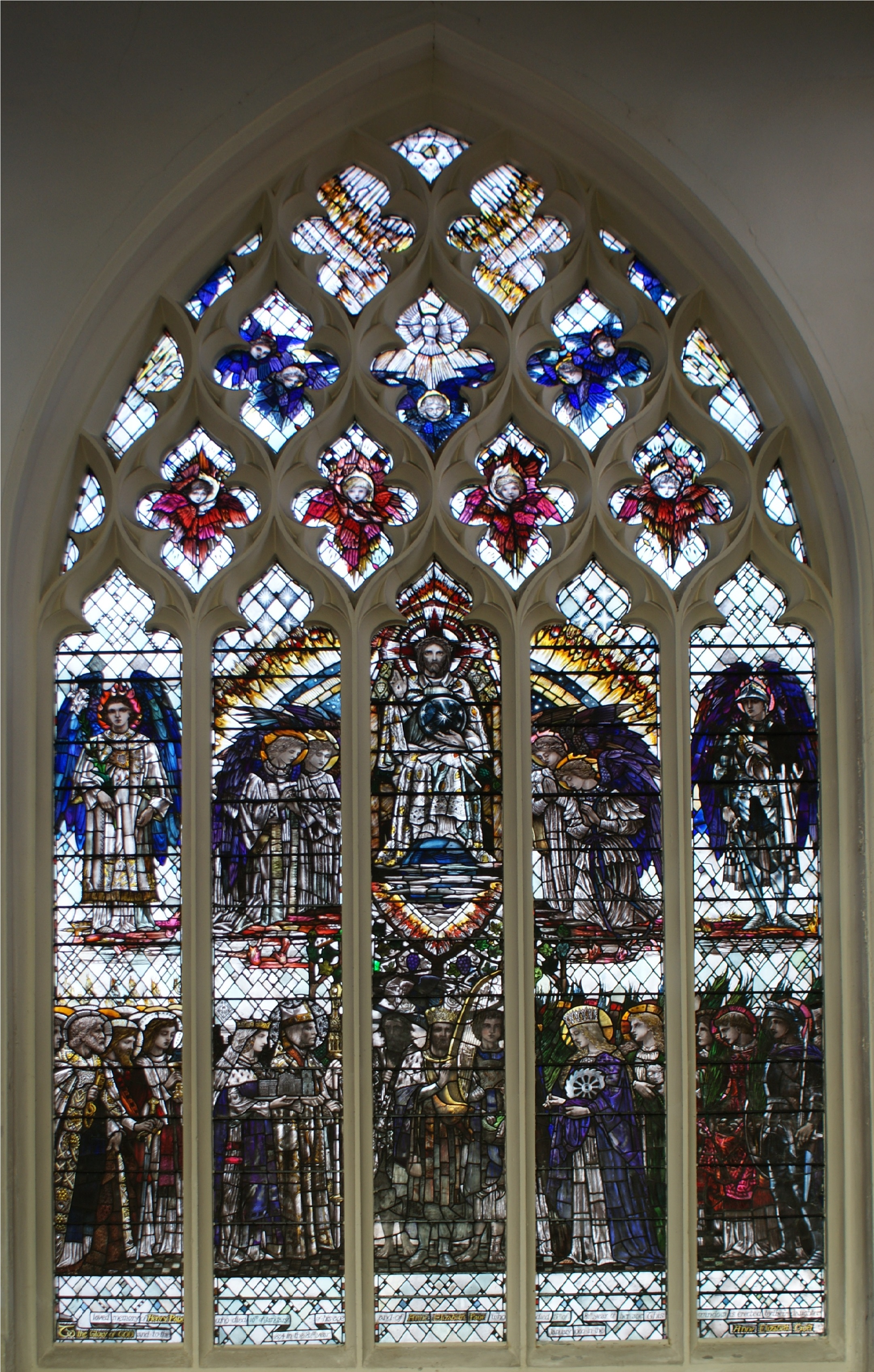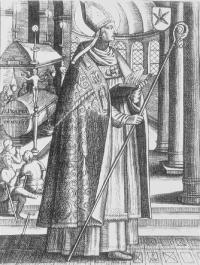|
Te Deum (Kodály)
Zoltán Kodály wrote a choral setting of the Christian hymn ''Te Deum''. First performed in 1936, this ''Budavári Te Deum'' is in a traditional Hungarian folk-music idiom but employs creative compositional methods unique to Kodály. Text Te Deum is a hymn of thanks and joy used in the liturgy of the Roman Catholic church. It is sometimes referred to as the “Ambrosian Hymn” because the text was once believed to be by St. Ambrose,Gray, Cecil. "Zoltan Kodaly." ''Tempo'', Vol. 3, Issue 63 (1963): 22–27 but it is now attributed to Nicetas of Remesiana, Nicetas, Bishop of Remesiana. Its liturgical use is year-round except for Advent and the penitential season of Lent. Recordings Kodály's setting of ''Te Deum'' has been recorded numerous times. A couple of examples are listed. * Zoltán Kodály and the Budapest Chorus, Polygram, 1990. * Janos Ferencsik and the Budapest Symphony Orchestra, Hungaraton, 1994.Ferencsik, Janos and the Budapest Symphony Orchestra. ''Kodaly: Budav ... [...More Info...] [...Related Items...] OR: [Wikipedia] [Google] [Baidu] |
Zoltán Kodály
Zoltán Kodály (; hu, Kodály Zoltán, ; 16 December 1882 – 6 March 1967) was a Hungarian composer, ethnomusicologist, pedagogue, linguist, and philosopher. He is well known internationally as the creator of the Kodály method of music education. Life Born in Kecskemét, Hungary, Kodály learned to play the violin as a child. In 1900, he entered the Department of Languages at the University of Budapest and at the same time Hans von Kössler's composition class at the Royal Hungarian Academy of Music. After completing his studies, he studied in Paris with Charles Widor for a year. In 1905 he visited remote villages to collect songs, recording them on phonograph cylinders. In 1906 he wrote a thesis on Hungarian folk song, "Strophic Construction in Hungarian Folksong". At around this time Kodály met fellow composer and compatriot Béla Bartók, whom he took under his wing and introduced to some of the methods involved in folk song collecting. The two became lifelong friends ... [...More Info...] [...Related Items...] OR: [Wikipedia] [Google] [Baidu] |
Te Deum
The "Te Deum" (, ; from its incipit, , ) is a Latin Christian hymn traditionally ascribed to AD 387 authorship, but with antecedents that place it much earlier. It is central to the Ambrosian hymnal, which spread throughout the Latin Church with other parts of the Milanese Rite in the 6th to 8th centuries. It is sometimes known as the Ambrosian Hymn, although authorship by Saint Ambrose is unlikely. The term Te Deum can also refer to a short religious service (of blessing or thanks) based upon the hymn. History Authorship of the hymn is traditionally ascribed to Saint Ambrose (died 397) or Saint Augustine (died 430). In 19th-century scholarship, Saint Hilary of Poitiers (died 367) and Saint Nicetas of Remesiana (died 414) were proposed as possible authors. In the 20th century, the association with Nicetas has been deprecated, so that the hymn, while almost certainly dating to the 4th century, is considered as being of uncertain authorship. Authorship of Nicetas of R ... [...More Info...] [...Related Items...] OR: [Wikipedia] [Google] [Baidu] |
Nicetas Of Remesiana
Nicetas (c. 335–414) was Bishop of Remesiana (present-day Bela Palanka, Serbia), which was then in the Roman province of Dacia Mediterranea. Biography Nicetas promoted Latin sacred music for use during the Eucharistic worship and reputedly composed a number of liturgical hymns, among which some twentieth-century scholars number the major Latin Christian hymn of praise, ''Te Deum'', traditionally attributed to Ambrose and Augustine. He is presumed to be the missionary to the barbarian Thracian tribe of the Bessi. Because of his missionary activity, his contemporary and friend, Paulinus of Nola, lauded him poetically for instructing in the Gospel barbarians changed by him from wolves to sheep and brought into the fold of peace, and for teaching to sing of Christ with Roman heart bandits, who previously had no such ability. However, it is doubtful whether these barbarians really were barbarians, or whether their mention is only a poetical topos. Indeed, Paulinus, who wrote a q ... [...More Info...] [...Related Items...] OR: [Wikipedia] [Google] [Baidu] |
Advent
Advent is a Christian season of preparation for the Nativity of Christ at Christmas. It is the beginning of the liturgical year in Western Christianity. The name was adopted from Latin "coming; arrival", translating Greek ''parousia''. In the New Testament, this is the term used for the Second Coming of Christ. Thus, the season of Advent in the Christian calendar anticipates the "coming of Christ" from three different perspectives: the physical nativity in Bethlehem, the reception of Christ in the heart of the believer, and the eschatological Second Coming. Practices associated with Advent include Advent calendars, lighting an Advent wreath, praying an Advent daily devotional, erecting a Christmas tree or a Chrismon tree, lighting a Christingle, as well as other ways of preparing for Christmas, such as setting up Christmas decorations, a custom that is sometimes done liturgically through a hanging of the greens ceremony. The equivalent of Advent in Eastern Christianity is ... [...More Info...] [...Related Items...] OR: [Wikipedia] [Google] [Baidu] |
Lent
Lent ( la, Quadragesima, 'Fortieth') is a solemn religious observance in the liturgical calendar commemorating the 40 days Jesus spent fasting in the desert and enduring temptation by Satan, according to the Gospels of Matthew, Mark and Luke, before beginning his public ministry. Lent is observed in the Anglican, Eastern Orthodox, Lutheran, Methodist, Moravian, Oriental Orthodox, Persian, United Protestant and Roman Catholic traditions. Some Anabaptist, Baptist, Reformed (including certain Continental Reformed, Presbyterian and Congregationalist churches), and nondenominational Christian churches also observe Lent, although many churches in these traditions do not. Which days are enumerated as being part of Lent differs between denominations (see below), although in all of them Lent is described as lasting for a total duration of 40 days. In Lent-observing Western Churches, Lent begins on Ash Wednesday and ends approximately six weeks later; depending on the Christian ... [...More Info...] [...Related Items...] OR: [Wikipedia] [Google] [Baidu] |
Hungarian Folk Music
Hungarian folk music ( hu, magyar népzene) includes a broad array of Central European styles, including the recruitment dance verbunkos, the csárdás and nóta. The name ''Népzene'' is also used for Hungarian folk music as an umbrella designation of a number of related styles of traditional folk music from Hungary and Hungarian minorities living in modern-day Austria, the, Czech Republic, Poland, Slovakia, central Romania (Transylvania) (Székely), Moldova (Csángó), and Serbia. The obscure origins of Hungarian folk music formed among the peasant population in the early nineteenth century with roots dating even further back. However, its broader popularity was largely due to the Hungarian composer Franz Liszt, who in 1846 began composing 19 Hungarian Rhapsodies for piano, five of which were later orchestrated, thus being the first pieces of music by a major composer to incorporate sources from so-called “peasant music”. These works, which broke free from classical tradition ... [...More Info...] [...Related Items...] OR: [Wikipedia] [Google] [Baidu] |
Compositions By Zoltán Kodály
Composition or Compositions may refer to: Arts and literature * Composition (dance), practice and teaching of choreography *Composition (language), in literature and rhetoric, producing a work in spoken tradition and written discourse, to include visuals and digital space *Composition (music), an original piece of music and its creation * Composition (visual arts), the plan, placement or arrangement of the elements of art in a work * ''Composition'' (Peeters), a 1921 painting by Jozef Peeters * Composition studies, the professional field of writing instruction * ''Compositions'' (album), an album by Anita Baker * Digital compositing, the practice of digitally piecing together a video Computer science * Function composition (computer science), an act or mechanism to combine simple functions to build more complicated ones *Object composition, combining simpler data types into more complex data types, or function calls into calling functions History *Composition of 1867, Austro-Hunga ... [...More Info...] [...Related Items...] OR: [Wikipedia] [Google] [Baidu] |




